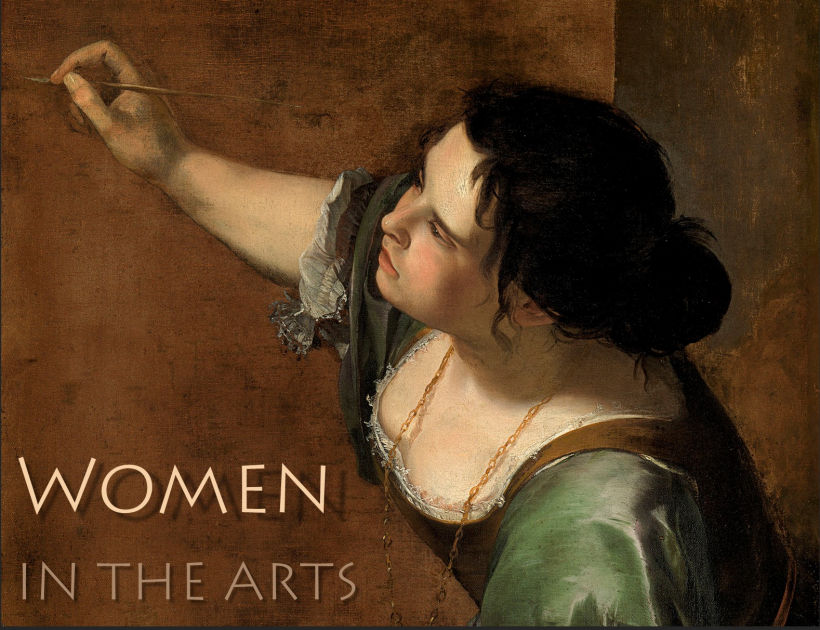3. The First Professionals.
The class will consist of mini-bios of artists, composers, and poets, each of whom has managed to sustain
a professional career in their art. All are women. All but one were born in Italy and worked there, though
we will also visit France and Spain. With the exception of one remarkable medieval predecessor, all come
from the later Renaissance or early baroque. We will pose the same questions of each: what factors enabled
them to become professional artists in the first place, and to sustain their careers once begun? And along
the way, we shall hear, read, and see some quite remarkable work.
The script, videos, and images will be posted immediately after class.
Here are brief bios of the artists, composers, and writers considered in the class, listed in order of birth.
All the specific biographies of women featured in the course are collected in the
BIOS link on the syllabus page.
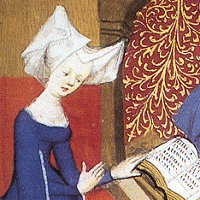 |
Christine de Pizan, 1364–1430. Italian-born French poet.
Born in Venice, Christine moved to Paris as a child, when her father became astrologer to the king. She married a court official, then had to support herself by her writing after he died. She wrote poetry and prose in most genres, and is credited as being the first female professional writer of modern times.
|
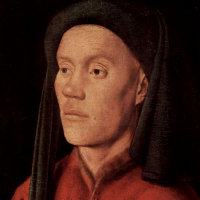 |
Gilles Binchois, 1400–60. Franco-Flemish composer.
Binchois was praised by his contemporaries in the same breath as Dufay, though his fame has declined somewhat. He is especially memorable as a melodist, with a gift for the long expressive line in both his secular and sacred vocal work. [He may or may not be the subject of this portrait by Jan van Eyck.]
|
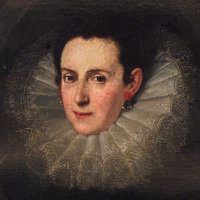 |
Properzia de' Rossi, 1490–1530. Italian sculptor.
The ground-breaking Bolognese sculptor is the only woman to appear in Girgio Vasari's Lives of the Great Artists. While this is indeed an accolade, the terms in which her career is discussed reinforces masculine ideas about the lesser roles of women.
|
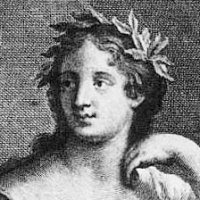 |
Gaspara Stampa, 1523–1554. Italian poet.
Listed by the Italians as one of the greatest poets of any gender, Stampa grew up in a cultured family, whose Venetian salon attracted artists of every kind. Her 300+ sonnets are mostly dedicated to her lover Count Collatino di Collato, and are couched equally in love and pain.
|
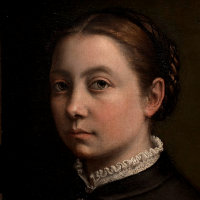 |
Sofonisba Anguissola, 1532–1625. Italian painter.
Though given a good humanist education by her noble parents, she obtained her artistic training through apprenticeships with Cremona painters. Her long career, mainly as a portraitist, included a decade as painter to the Spanish royal court.
|
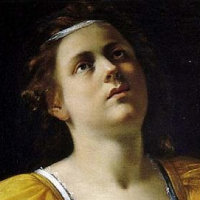 |
Maddalena Casulana, 1544–90. Italian composer.
Casulana was the first woman to publish a collection of her music (Venice, 1568). Other than that and her subsequent publications, we know almost nothing about her background and training. [There is no evidence that the image is actually her portrait, as traditionally claimed.]
|
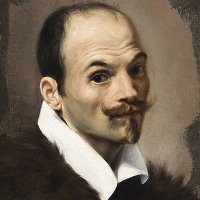 |
Orazio Gentileschi, 1563–1639. Italian painter.
One of the few Italian followers of Caravaggio who were friends with the master, he traveled widely and was important in spreading knowledge of his style, athough his own painting became lighter and more colorful in his later years. He was the father and teacher of Artemisia Gentileschi.
|
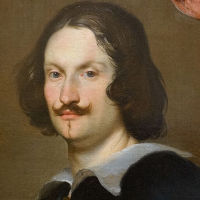 |
Bernardo Strozzi, 1581–1644. Italian painter.
Strozzi was one of the leading painters in Northern Italy during the baroque era. His Gamba Player (c.1640) is often thought to be a portrait of the singer-composer Barbara Strozzi (no relation). [The image is by Strozzi, but probably not of him.]
|
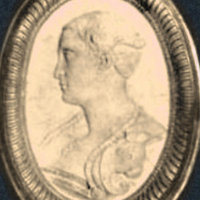 |
Francesca Caccini, 1587–1640. Italian composer.
Francesca was the daughter of Giulio Caccini, a member of the Florentine Camerata, and one of the earliest composers of opera; her own Liberazione di Ruggiero (1625) is regarded as the first opera composed by a woman. Her career at the Medici court was interrupted by two marriages, the second to a nobleman; both husbands and her only child died after a few years.
|
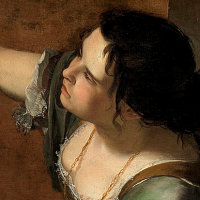 |
Artemisia Gentileschi, 1593–1653. Italian painter.
Trained by her father Orazio Gentileschi, Artemisia began producing work in her teens that outstripped his in dramatic power and psychological observation, especially in her portrayals of strong women. She was the first woman to be elected to the Florentine Academy and, at 23, one of its youngest members.
|
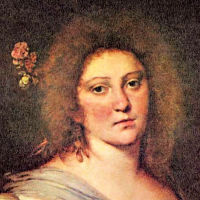 |
Barbara Strozzi, 1619–77. Italian painter.
Barbara was the adopted (and perhaps natural) daughter of the Venetian librettist Giulio Strozzi, celebrated as a virtuoso singer while still in her teens. In many ways, her many composition for voice preserve what must have been the extraordinary dramatic intensity and expressive daring of her own performances. [The painting by Bernardo Strozzi shown here is only traditionally supposed to be her portrait.]
|
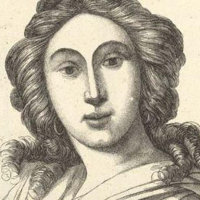 |
Luisa Roldán, 1652–1706. Spanish sculptor.
The daughter of one sculptor and wife of another, Roldán was launched on a career that took her to the Spanish royal court. Nonetheless, she died in poverty. Her preferred media were wood and clay, which she then painted with the help of her husband.
|




































